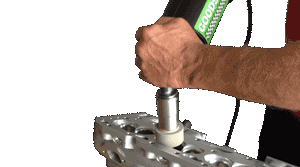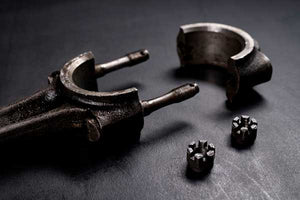Cylinder Boring Tips
Lightweight block castings have become very prevalent in our market. Since the overall mass has been reduced, the controlled stresses have become an important factor in the block’s integrity. To ensure integrity, we must recreate that stress by using a Torque Plate when boring and honing.
Always begin by torquing your main caps in place to correct specifications. Next, install a torque plate and torque in place using final assembly torque specifications. Also, we recommend using correct length bolts. If they are too long or too short, they may abnormally stress the block. The future will even dictate correctly torquing all external motor mounts and related accessory brackets.
Allow .003″ minimum material in the cylinder bore. Remove broken and partially severed material by honing after the boring operation.



